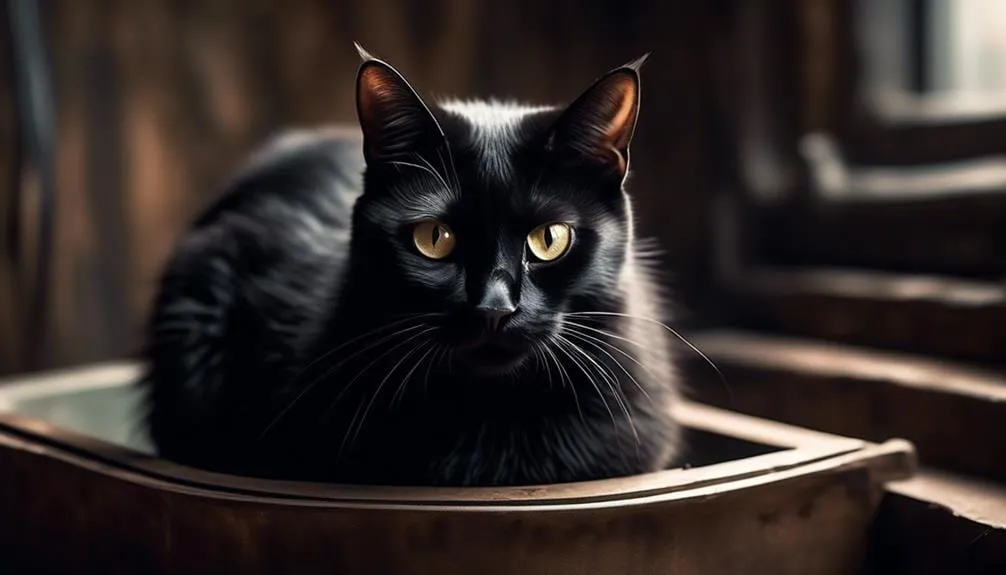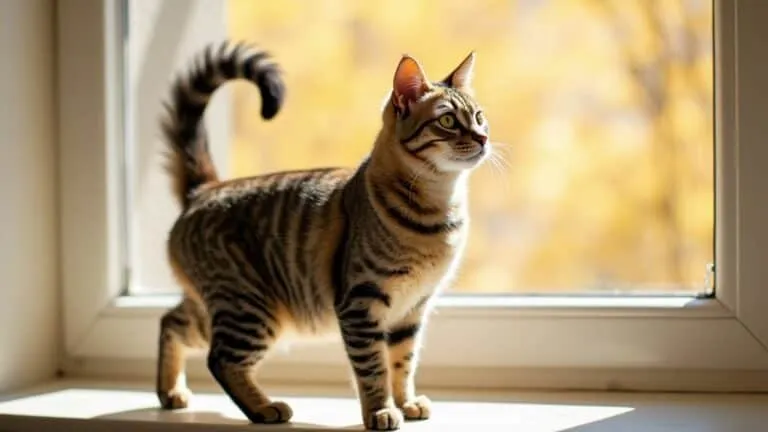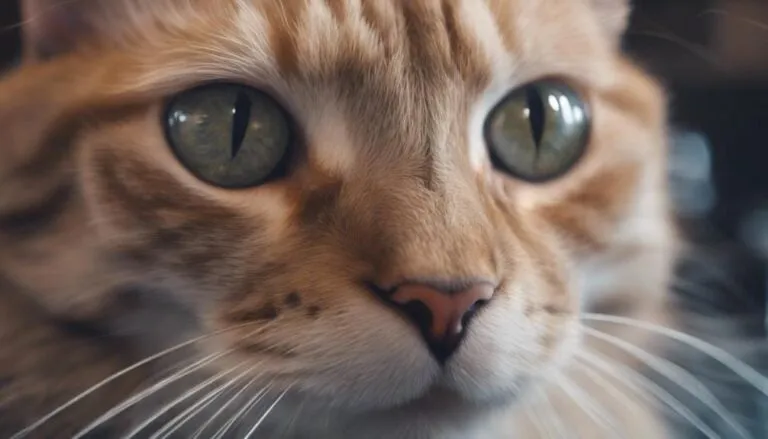The Best Fluffy Pancakes recipe you will fall in love with. Full of tips and tricks to help you make the best pancakes.

Have you ever wondered why your cat insists on scratching the sides of their litter box? Prepare to have your curiosity satisfied as we unravel the mystery behind this peculiar behavior.
While it may seem like a simple act, there is actually a fascinating reason behind it that reveals much about our feline friends' instincts and needs.
So, if you're ready to uncover the surprising truth about why cats scratch the sides of their litter box, get ready for a journey into the intriguing world of cat behavior.
Key Takeaways
- Cats scratch the sides of the litter box to cover their waste and mimic their natural instincts.
- Scratching the sides of the litter box can be a way for cats to mark their territory.
- Maintaining a clean litter box can help prevent excessive scratching behavior.
- Environmental factors, such as inadequate litter box size or cleanliness, can influence litter box scratching.
Natural Instincts and Covering Waste
Cats instinctively scratch the sides of their litter box to cover their waste and mimic their natural instincts. This behavior is rooted in their psychology and serves multiple purposes.
Firstly, scratching the sides helps prevent predators from tracking them down in the wild. The sound of scratching is inevitable due to the limited space of a litter box, but larger amounts of litter can minimize this behavior.
Additionally, cats often scratch the sides unintentionally to remove clumps of litter stuck between their toes. It also allows them to stretch their backs and sharpen their claws.
However, scratching the sides of the litter box can also be a way for cats to mark their territory. Cats release their scent through the scent glands on their paw pads, and scent-marking is a way for them to claim their territory and communicate with other cats. Unneutered/unspayed cats and cats sharing a litter box with others may engage in this behavior.
Understanding the psychology behind scratching behavior and the role of scent marking in cat communication can help pet owners provide appropriate outlets for this natural instinct.
Territorial Marking and Communication
The act of scratching the sides of the litter box not only serves as a means for cats to cover their waste and mimic their natural instincts but also plays a significant role in territorial marking and communication among feline companions.
Scent marking behavior is a common way for cats to claim their territory and communicate with other cats. Unneutered cats are more likely to engage in territorial marking, as marking their territory is driven by hormones.
When cats scratch the sides of the litter box, they release their scent through the scent glands on their paw pads, effectively marking their territory. This behavior is often observed in households with multiple cats sharing a litter box, as each cat may feel the need to assert their territorial boundaries.
Understanding this behavior can help cat owners create a harmonious environment for their feline companions.
Factors Affecting Litter Box Setup
Considerations for setting up a litter box include the size of the box, accessibility for different cat breeds and ages, and the amount and type of litter to use. When it comes to litter box placement, there are several factors to consider.
- Size of the box: Cats of different ages and breeds have different needs. Kittens and senior cats may require an open litter box with easy access, while larger cats like Maine Coon or Norwegian Forest cats need more space.
- Accessibility: Some cats may feel confined in a closed litter box, so it's important to provide options that suit their preferences. Inadequate space can lead to cats doing their business outside the litter box.
- Cleanliness: Cats prefer clean litter boxes over dirty ones. It's recommended to scoop the litter at least once a day and to regularly clean and change the litter. Neglecting to do so can lead to excessive scratching on the sides. Maintaining a clean litter box is important to prevent this behavior and ensure the well-being of your cat.
Health Issues Related to Scratching
Scratching the sides of the litter box can sometimes be indicative of underlying health issues that may require veterinary attention. Cats may exhibit this behavior if they've urinary tract infections, allergies, or skin irritations.
Urinary tract infections are common in cats and can cause discomfort and pain, leading them to scratch the sides of the litter box.
Allergies or skin irritations can also lead to scratching behavior as cats try to alleviate the itchiness or discomfort.
It's important to observe your cat's scratching habits and consult a veterinarian if you notice any excessive or persistent scratching. They can provide a thorough examination and recommend appropriate treatment to address the underlying health issues.
Behavioral Solutions and Veterinary Advice
To address behavioral issues related to scratching the sides of the litter box and seek appropriate veterinary advice, there are several effective strategies that can be implemented:
- Providing multiple litter boxes: Having more than one litter box ensures that each cat has access to a clean and private space. It also helps prevent territorial marking and reduces the chances of litter box conflicts.
- Exploring litter box placement: The location of the litter box plays a crucial role in a cat's willingness to use it. Placing the litter box in a quiet and easily accessible area can help reduce anxiety and promote regular use.
- Seeking veterinary advice: If behavioral solutions don't alleviate the scratching behavior, it's important to consult a veterinarian. They can evaluate the cat's health, rule out any underlying medical conditions, and provide appropriate treatment options.
Frequently Asked Questions
Why Do Cats Scratch the Sides of Their Litter Box to Cover Their Waste?
When cats scratch the sides of their litter box, it's a natural instinct to cover their waste and feel secure. This behavior has psychological benefits, like marking territory and stretching. The design of the litter box can influence scratching behavior.
How Does Scratching the Sides of the Litter Box Help Cats Mimic Their Natural Instincts?
Scratching the sides of the litter box helps cats mimic their natural instincts by allowing them to mark their territory, stretch their backs, and sharpen their claws. It also helps remove litter stuck between their toes.
What Are Some Factors to Consider When Setting up a Litter Box for Cats?
When setting up a litter box for your cat, consider the placement and size. Choose a location that offers privacy and security, and ensure the litter box is large enough for your cat to comfortably use.
Are There Any Health Issues Related to Cats Scratching the Sides of Their Litter Box?
Scratching the sides of the litter box can lead to health risks for your cat, such as urinary tract infections, inflammatory bowel disease, arthritis, allergies, and digestive issues. To prevent these, provide a clean and appropriate litter box environment and seek veterinary advice.
What Are Some Behavioral Solutions and When Should I Seek Veterinary Advice for Litter Box Scratching?
When dealing with litter box scratching, consider behavioral solutions such as providing multiple boxes, experimenting with different litter types, and addressing underlying stress. Seek veterinary advice if the behavior persists or is accompanied by changes in health or behavior.
Conclusion
In conclusion, understanding why cats scratch the sides of their litter box can provide valuable insight into their natural instincts and behaviors. By mimicking their wild counterparts, cats are able to cover their waste, communicate their territory, and maintain their hygiene.
However, excessive scratching may indicate underlying issues that require attention from a veterinarian. Remember, a happy and healthy cat starts with a positive litter box environment.
As the saying goes, 'A well-maintained litter box keeps the cat at bay.'








